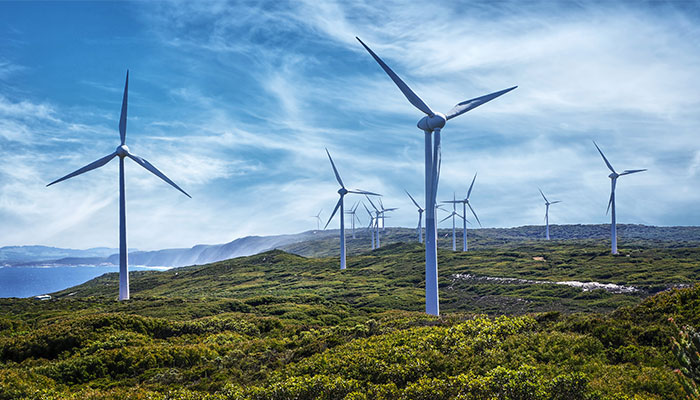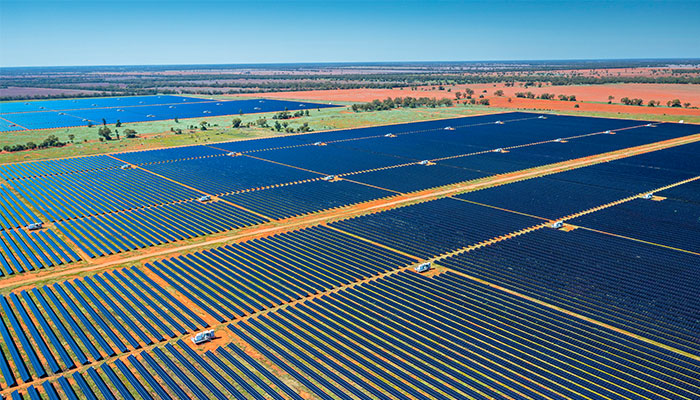Australia has made substantial progress replacing coal-fuelled power plants with renewable sources, but more policy change and faster action is needed to further reduce the greenhouse gas emissions that cause climate change, according to Macquarie University contributors to the annual report, Countdown on Health and Climate Change in Australia.

"The good news is that Australia has made significant changes to its electricity system in recent years which has reduced our carbon footprint," says Professor Stefan Trueck, who is one of 25 academics and health practitioners from 15 research institutions who collaborated on the 2024 report which was released on 25 March in The Medical Journal of Australia.
"Currently, there is no planned investment in new coal-fired generation and instead the focus is on renewables - and that's a major step forward given that Australia used to have an electricity system relying mainly on coal, " says Professor Trueck from the Macquarie Business School's Department of Actuarial Studies and Business Analytics.
Associate Professor Paul Beggs from the Macquarie University School of Natural Sciences is the lead author of the report. The report has been produced every year since 2018 to assess Australia's progress towards the goals of the Paris Agreement and to track the connections between health and climate change.
Australia's progress comes from a low base, says Professor Trueck. Australia is still the largest emitter of greenhouse gases per capita among members of the Organisation for Economic Co-operation and Development (OECD) – a group of 38 developed and high-income countries. Energy generation is the cause of 30 per cent of these emissions, followed by transport, industry and agricultural production.
However, the carbon intensity of electricity generation in Australia has fallen more than 30 per cent over the past 15 years because more than 15 gigawatts (GW) of new solar and wind generation capacity has been added to the Australian National Electricity Market.
"This is a huge achievement," Professor Trueck says. "Addressing electricity generation is key to reducing carbon emissions. Hardly any other country in the world has reduced it by that much so quickly."
To put this into perspective, 1 GW is enough to power 700,000 homes, so at full capacity the new renewable generation assets are equivalent to the power needed by 10.5 million homes — more than the populations of Sydney, Melbourne, Brisbane, Perth, Newcastle, Hobart, Darwin and Canberra combined. However, it is important to note that generation from renewables is intermittent, so these assets will typically not deliver the fully installed capacity.
At the same time, more than 2.3 GW of black coal and 2.3 GW of brown coal generation assets have been removed.
"These numbers illustrate a significant transition away from electricity from 'dirty' coal-fired power and the substantial growth in variable renewable energy generation in Australia," says Professor Trueck.
As Australia moves away from fossil fuels, it will have marked health benefits, he says, such as a reduction in deaths annually from airborne particulate matter.
At the frontline of climate change catastrophe
The MJA-Lancet Countdown report says that record-breaking natural disasters caused by climate change continue to have catastrophic impacts in Australia. The actual total annual insured losses from natural disasters in 2022 (the most current figure available) was $7.168 billion — the highest on record.

The researchers attributed this to the unprecedented floods across NSW and southeast Queensland in February and March 2022, with substantial damage to properties and infrastructure, 23 deaths and the displacement of tens of thousands of people.
On average, 55 per cent of Australia has experienced extreme drought for at least one month a year over the past decade — an increase from just 14 per cent in the 1950s and the second worst figure globally.
"Australia is clearly on the frontline of the climate change catastrophe," the MJA-Lancet Countdown report says.
The report identifies areas to better prepare the Australian health system for the challenges presented by climate change.
In other findings, the report also highlights that consumption of too much red meat and processed meat and insufficient amounts of fruit and vegetables accounted for about half of the 87,166 diet-related deaths in Australia in 2021 (the most current figure available).
"Correction of these imbalances would both save lives and reduce the heavy carbon footprint associated with meat production," Professor Beggs says.
Ambitious targets
Professor Trueck says the Australian government has set some of the most ambitious emissions targets in the world. Just weeks after its election, the Albanese government passed the Climate Change Act 2022 which legislated an emissions reduction target of 43 per cent from 2005 levels by 2030 and net zero emissions by 2050.

Good news: Professor Stefan Trueck, pictured above, says Australia has made dramatic changes to its electricity system in recent years which has reduced our carbon footprint.
Other state governments have also taken their own initiatives such as NSW's Net Zero Plans to significantly cut emissions by 70 per cent by 2035 compared to 2005 levels.
"These targets are a step in the right direction but our report argues that more urgent and substantial action is required to safeguard Australia and the health of its people,'' says Professor Beggs.
This includes ceasing fossil fuel subsidies, significant additional investment in large scale variable renewable energy generation, research into storage technologies and the reduction of beef and dairy farming.
Professor Beggs also noted the report finds "Australia's first ever National Health and Climate Strategy is an important step forward, identifying areas to better prepare the Australian health system for the challenges presented by climate change."
Australians can also play their small part in emissions reductions by switching to a green power provider, installing solar panels in combination with a battery storage system, and also reducing their consumption of red meat and dairy products, Professor Trueck says.






